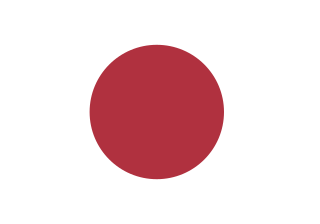THE CHARM OFFENSIVE
In early 1989, Brazilian diplomacy was in full swing. President Simon left VP Miguel Arraes as Acting President to go on a tour of Europe, where he would meet with foreign dignitaries and hatch out deals with the grandees of the Old Continent.
The Treaties of Caracas
Simon's first destination was Brazil's ally of the 20th Century, Britain. Having already been in talks with the Lawson Government beforehand, Simon signed an agreement with the United Kingdom granting the Royal Navy docking rights in Brazilian ports, in exchange receiving a significant concession towards restoring Brazil's desired peace and stability in South America.
In Venezuela, the Brazilian Minister of Foreign Affairs, Saraiva Guerreiro, paid Caracas a visit and got from his counterpart two great victories. The British signed a treaty with Venezuela acknowledging the Arbitration of 1899 to have been in error, and that the territory of Essequibo belonged to the Republic of Venezuela. A major win for the Venezuelan government, which it used to justify their pivot in foreign affairs.
Brazil, meanwhile, signed a trade agreement with Venezuela, exporting their industrial goods, from machinery to sweatshirts, while importing Venezuela's own oil production. Brazil also began importing energy from Venezuela, connecting the Federal Territory of Rio Branco to the Venezuelan power grid. Profitable for Venezuela and Brazil both.
With these coups in diplomacy, Venezuela's departure from the Argentine sphere was expected, and their later entry into the Community of American States ultimately unsurprising.
[X] The Republic of the United States of Brazil
[X] The Republic of Venezuela
[ ] The United Kingdom of Great Britain and Northern Ireland
@tankdrop24
Agreements with Central America
Saraiva Guerreiro's foreign tour did not end at Caracas. He continued to head north, visiting his counterparts and even heads of state in Santo Domingo, Haiti, Panama, Costa Rica, El Salvador and Guatemala. All were offered similar agreements, with similar favorable results in negotiations.
They would open their markets to Brazilian industry and, in exchange, Brazil would import the agricultural and mineral products that made up the bulk of their smaller economies. Oftentimes, those were not necessary or significant for the Brazilian economy; they grew enough of their own bananas or coffee. But the Simon Administration considered the diplomatic and economic ties made with these agreements worth it.
Brazilian firms had also made the commitment to establish branches in these nations, generating jobs and economic dynamism for their new partners and clients.
[X] The Republic of the United States of Brazil
[X] The Republic of Guatemala
[X] The Dominican Republic
[X] The Republic of Haiti
[X] The Republic of El Salvador
[X] The Republic of Costa Rica
[X] The Republic of Panama
The Mexico-Brazil Bilateral Agreement
Nor did Saraiva Guerreiro's foreign tour end in Guatemala City. He went further north still, and represented the Brazilian government in signing a trade agreement with Mexico. Brazil would sell Mexico capital goods such as machinery and steel, the latter of which Brazil was the largest producer of in Latin America, producing more than double Mexico's output, while trade between their two diversified economies was bound to lead to growth and prosperity for both. Another notable plank of the agreement was a student exchange program between Brazilian and Mexican universities, in the hope of fostering greater dialogue and exchange between nations.
[X] The Republic of the United States of Brazil
[X] The United Mexican States
The Italy-Brazil Bilateral Agreement
Meanwhile in Europe, President Simon continued his tour in Europe, publicly signing with the Duce a trade agreement with the Kingdom of Italy. Their terms were simple. Brazil would export tropical goods, such as coffee and cocoa, some which was in fact the excess goods imported from Central America, beef, which both Brazil and other members of the CAS were great producers of, and soybeans, which had been a growing agricultural business in Brazil since the 1970s.
Meanwhile, Italian automakers would export their products to the large Brazilian market, though on some conditions. While the parts could be imported, italian cars had to be assembled in Brazilian plants, which the automakers would have to partner with Brazilian capitalists to establish as subsidiaries. Additionally, Italy will fund scholarships for Brazilian students, to allow them to study in Italian or Brazilian universities and to conduct their research, with Italy being given the right to vet candidate institutions proposed by Brazil.
[X] The Republic of the United States of Brazil
[X] The Kingdom of Italy
@Vald
The Hispano-Brazilian Treaty of Cooperation and Commerce
Another destination of President Simon's tour was Spain, which had opened friendly negotiations with Itamaraty (Brazil's foreign ministry) not long before the trip was organized. Once in Spain, he signed an agreement with President Piñar's government, in regards to trade, research and education. Brazil would export chiefly their prodigious quantities of iron ore, industrial machinery and tropical goods such as coffee, cotton and sugar (including what Brazil imported and reexported from Central America). Spain, meanwhile, would contribute with exports from their pharmaceutical industry, which would supplement Brazil's own homegrown sector, olive oil, wine, as well as Spanish industrial machinery, supplementing what Brazil's own industrial sector couldn't make for now.
As to education and research, Brazil and Spain agreed to a studen exchange program between their respective universities, as well as the creation of the new Amazonas Foundation, a Spanish research institute dedicated to studying the Amazon Rainforest. Any scientific and technological advancements to arise from their research would be shared between the two nations.
[X] The Republic of the United States of Brazil
[ ] The Spanish Empire
@Cathari
The Berlin Agreement
Simon's final stop in Europe was the German capital of Berlin, where he celebrated a landmark agreement with the Reich. Brazil would export raw materials and tropical goods to the German Reich, such as bauxite, manganese, coffee, sugar, cotton, bananas, soybeans and beef. As with the other export agreements, Brazil would also reexport goods acquired from their Central American partners, on top of the already prodigious national production. In addition, German buyers would have privileged access to Brazilian iron and rare earth metals.
This concession had a simple reason: Germany agreed to withdraw their investments from Argentina, and relocate them to Brazil. This move would be subsidized by Brazil, with these firms receiving fiscal breaks and legal aid until they could reestablish themselves on the (much larger) Brazilian market.
[X] The Republic of the United States of Brazil
[ ] The German Reich
@SirLagginton

























